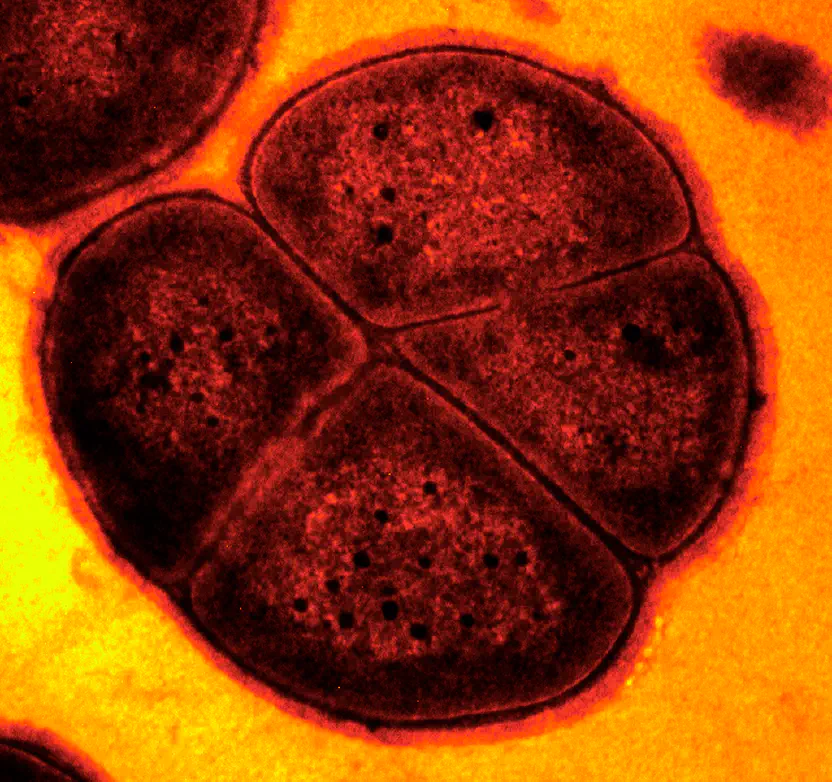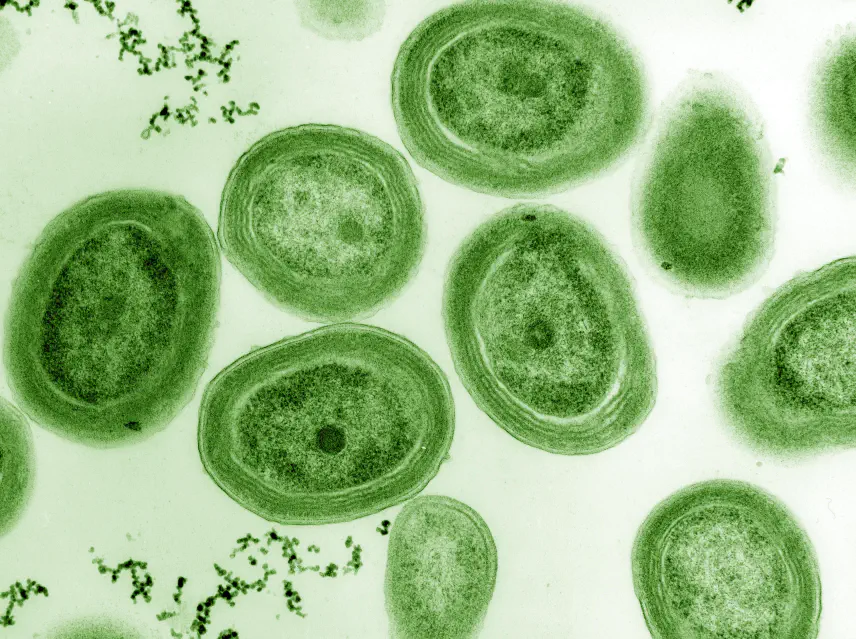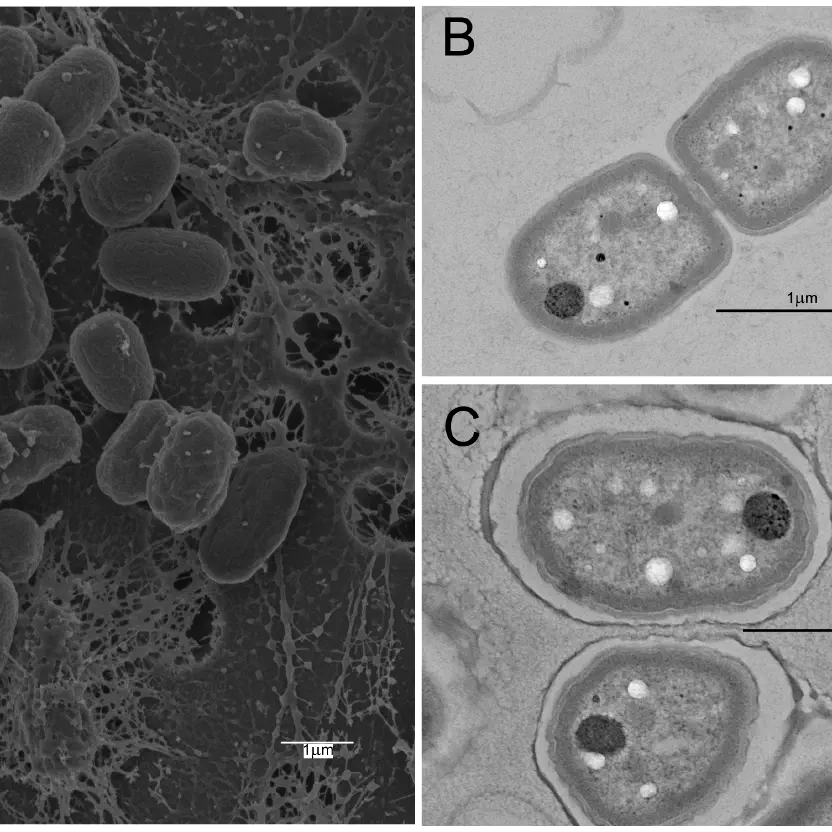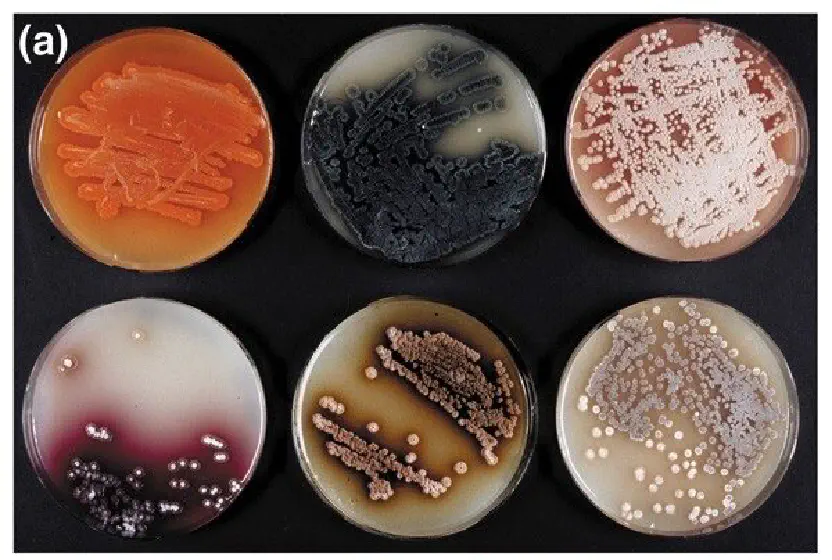
 08.25.2021
08.25.2021Deinococcus radiodurans
Deinococcus radiodurans is an extremophilic organism, meaning it can live in extremely challenging environments – its name literally means “a strange berry that withstands radiation.”

Cover photo credit: TEM image of Prochlorococcus MED4 with overlay green coloring. Image taken by Luke Thompson from Chisholm Lab and Nikki Watson from Whitehead, MIT, 2007
Prochlorococcus marinus is the most abundant photosynthetic organism in the ocean, and most likely on the planet! Like plants, it produces oxygen for humans to breathe while fixing carbon dioxide.
P. marinus is a unicellular cyanobacteria that can be transition between spherical and rod-shaped. It is smaller than most bacteria, resulting in a greater surface area-to-volume ratio which provides the organism an advantage in nutrient uptake. Furthermore, its genome is streamlined, ranging from 1.6 Mbp to approximately 2.6 Mbp. The condensed genome, maintaining about 2,000 genes, is believed to be the minimum genomic requirements for a phototroph, especially when compared to the usual 10,000 genes on the genome of the typical eukaryotic algae.
P. marinus is dominant in the oceans from latitudes near the southern tip of Australia to the northern regions of the US and China. P. marinus can be found all throughout the photic zone, up to approximately 200m deep. It is an extremely competitive organism and readily colonizes the open ocean with limited nutrients over wide range of irradiances. They appear to perform better when the water column is stratified, and not when it is well-mixed with increased nutrients.
Overall, the primary organic production and carbon sequestration in the open and nutrient-scarce ocean can be attributed to Prochlorococcus, giving it a significant influence on climate.

 08.25.2021
08.25.2021Deinococcus radiodurans is an extremophilic organism, meaning it can live in extremely challenging environments – its name literally means “a strange berry that withstands radiation.”

 07.25.2021
07.25.2021Gloeobacter violaceus is an atypical bacteria that lives on rocks and requires sunlight for growth.

 07.25.2021
07.25.2021Streptomyces coelicolor belongs to the Streptomyces genus of bacteria. Not only do they produce about two-thirds of clinical antibiotics, Streptomyces are curious bacteria in terms of their life cycles and morphological characteristics.